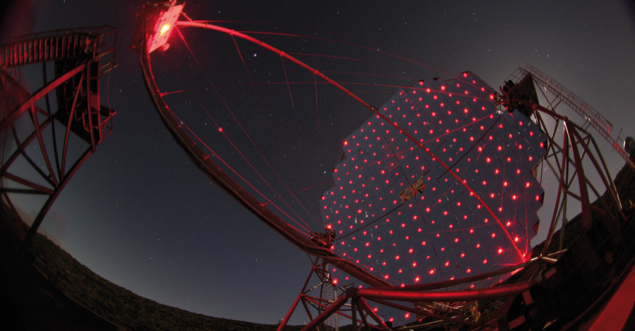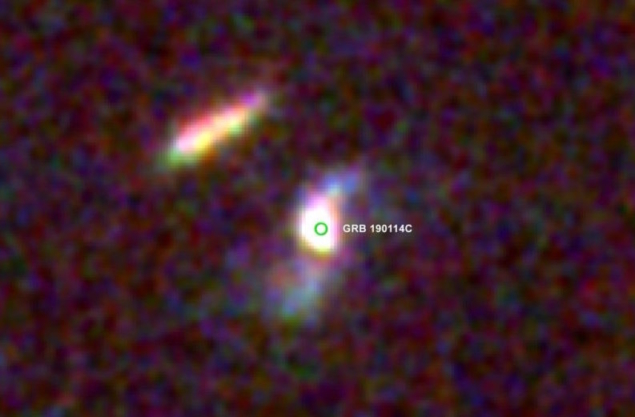
Gamma-ray bursts (GRBs) are the brightest electromagnetic events in the universe since the Big Bang. First detected in 1967, GRBs have been observed about once per day using a range of instruments, allowing astrophysicists to gain a deeper understanding of their origin. As often happens, 14 January 2019 saw the detection of three GRBs. While the first two were not of particular interest, the unprecedented energy of photons emitted by the third – measured by the MAGIC telescopes — provides a new insight into these mysterious phenomena.
The study of GRBs is unique, both because GRBs occur at random locations and times and because each GRB has different time characteristics and energy spectra. GRBs consist of two phases: a prompt phase, lasting from hundreds of milliseconds to hundreds of seconds, which consists of one or several bright bursts of hard X-rays and gamma-rays; followed by a significantly weaker “afterglow” phase which can be observed at lower energies ranging from radio to X-rays and lasts for periods up to months.
The recent detection adds yet another messenger: TeV photons
Since the late 1990, optical observations have confirmed both that GRBs happen in other galaxies and that longer duration GRBs tend to be associated with supernovae, strongly hinting that they result from the death of massive stars. Shorter GRBs, meanwhile, have recently been shown to be the result of neutron-star mergers thanks to the first joint observations of a GRB with a gravitational wave event in 2017. While this event is often regarded as the start of multi-messenger astrophysics, the recent detection of GRB190114C lying 4.5 billion light years from Earth adds yet another messenger to the field of GRB astrophysics: TeV photons.

The MAGIC telescopes on the island of La Palma measure Cherenkov radiation produced when TeV photons induce electromagnetic showers after interacting with the Earth’s atmosphere. During the past 15 years, MAGIC has discovered a range of astrophysical sources via their emission at these extreme energies. However, detecting the emission from GRBs, despite over 100 attempts, remained elusive despite theoretical predictions that such emission could exist.
On 14 January, based on an alert provided by space-based gamma-ray detectors, the MAGIC telescopes started repointing within a few tens of seconds of the onset of the GRB. Within the next half hour, the telescopes had observed around a 1000 high energy photons from the source. This emission, which has long been predicted by theorists, is shown by the collaboration to be the result of the “synchrotron self-Compton” process, whereby high-energy electrons accelerated in the initial violent explosion interact with magnetic fields produced by the collision between these ejecta and interstellar matter. The synchrotron emission from this interaction produces the afterglow observed at X-ray, optical and radio energies. However, some of these synchrotron photons subsequently undergo inverse Compton scattering with the same electrons, allowing them to reach TeV energies. These measurements by MAGIC show for the first time that indeed this mechanism does occur. Given the many observations in the past where it wasn’t observed, it appears to be yet another feature which differs between GRBs.
The MAGIC results were published in an issue of Nature which also reported a discovery of similar emission in a different GRB by another Cherenkov telescope: the High Energy Stereoscopic System (H.E.S.S) in Namibia. While the measurements are consistent, it is interesting to note that the measurements by H.E.S.S were made ten hours after that particular GRB, showing that this type of emission can occur also at much later time scales. With two new large-scale Cherenkov observatories – the Large High Altitude Air Shower Observatory in China and the global Cherenkov Telescope Array — about to commence data taking, the field of GRB astrophysics can now expect a range of new discoveries.





